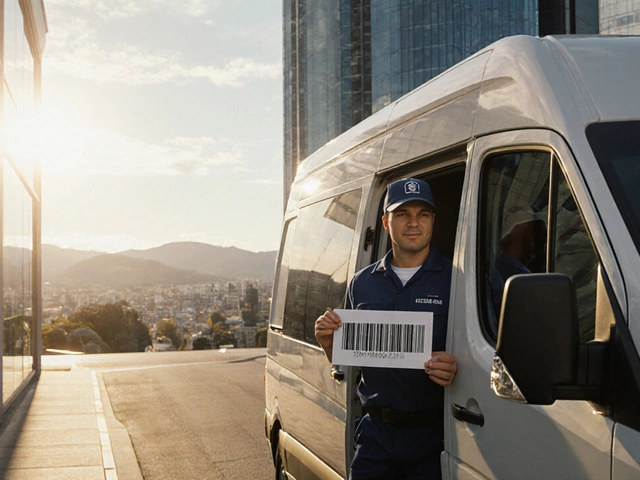Pallet pricing sounds straightforward, but there’s a lot hiding under that label. Basically, it’s how delivery companies charge when you ship goods stacked on a pallet, instead of counting each box or item. This can make things much easier—especially if you’re sending stuff in bulk or moving products like furniture, gadgets, or food. No one wants to calculate costs for a hundred separate boxes, right?
What trips people up is that pallet delivery rates aren’t just about the size or weight. There’s a cocktail of rules and sneaky extras that can bump up the final price. If you’re running a business or even just sending something big, understanding how pallet pricing works can save you a headache—and maybe a chunk of cash. Let’s break down why pallet pricing exists, how companies figure out the numbers, and how you can play the system to get a deal that actually makes sense.
- What Is Pallet Pricing?
- How Do Companies Set Pallet Rates?
- Factors That Affect Pallet Delivery Costs
- Tips to Get the Best Pallet Pricing
What Is Pallet Pricing?
Pallet pricing is simply the way delivery companies set the cost for moving goods that are loaded onto a pallet—usually a wooden or plastic base that holds stacked boxes or products. Instead of charging for each box, companies use the pallet as the main unit for pricing. This makes things simpler and often cheaper, especially if you’re shipping a bunch of stuff together.
Most pallet delivery services base their rates on the size and weight of the loaded pallet, plus the pickup and drop-off locations. The standard European pallet (or "Euro pallet") measures 120 cm x 80 cm, but companies often use several size categories: quarter, half, and full pallet. Here’s a quick look at typical pallet sizes:
| Pallet Size | Dimensions (cm) | Typical Max Weight |
|---|---|---|
| Quarter Pallet | 80 x 60 | Up to 250 kg |
| Half Pallet | 120 x 80 | Up to 500 kg |
| Full Pallet | 120 x 100 | Up to 1,000 kg |
Here’s where things get interesting: with pallet pricing, you usually pay less per item as you stack more onto the pallet—think "bulk discount." But, there are limits. If the pallet is overstuffed, or the height goes past company guidelines (usually around 180 cm), you could face extra charges.
Pallet prices usually include basic handling, tracking, and delivery to areas with good road access. But if you need help with loading or need delivery in a difficult location (like a busy city center or rural farm), that’s where extra fees sneak in. Pallet pricing is meant for straightforward jobs—anything complicated bumps up the price.
In short, pallet pricing is about packaging, weight, and distance. If you understand these basic rules, you’re already ahead of most first-time shippers. And if you’re shipping more than a few boxes, it’s a smart move to start asking for pallet delivery quotes instead of paying per item.
How Do Companies Set Pallet Rates?
Understanding pallet pricing gets a bit more interesting once you peek behind the scenes. First, delivery companies don’t just plug in a single number and call it a day. They use a mix of rules, calculators, and good old-fashioned negotiations. Most start with the basics: pallet size (standard is 120cm x 100cm in Europe, or 48" x 40" in the U.S.), the total weight, and distance the pallet needs to travel.
Then come the nitty-gritty details. Is your delivery going to a remote spot or a city center? Are you sending a half-pallet, full-pallet, or something super oversized? Some companies have set pallet delivery zones, like shipping from London to Manchester, and each zone can have its own pricing tier. There are even companies that use dynamic pricing—meaning the rate changes based on supply, demand, fuel prices, and timing. You can see this in the table below:
| Factor | Typical Impact on Rate |
|---|---|
| Distance (miles/km) | Longer routes cost more |
| Pallet Weight | Heavier pallets bump up fees |
| Pallet Size | Oversized or non-standard sizes raise the price |
| Delivery Speed | Next day or express = higher rates |
| Special Handling | Fragile or hazardous goods cost extra |
Most companies also look at their own operating costs—like fuel, tolls, driver wages, insurance, and even truck availability. If there’s a shortage of drivers or fuel costs are up, expect rates to climb. And don’t be shocked by extra fees: things like liftgate service, residential delivery, or failed delivery attempts all sneak onto your bill if you’re not careful.
To put this in perspective, here’s a quote from Transport Topics, a logistics industry staple:
“Pallet rates depend on a blend of fixed business costs, customer volume, and the ability to fill each truck to capacity. Smart shippers always ask what’s buried in the final quote.”
It’s not just about the math. Some companies offer deals for regular customers or volume shippers. So if you’re moving goods often, ask about loyalty rates or contract quotes instead of sticking to spot prices every single time. Make sure you always get a breakdown, not just a lump sum.

Factors That Affect Pallet Delivery Costs
Here’s where things get a bit messy—pallet pricing throws a bunch of different things into the mix. It’s not just how heavy the pallet is. Let’s talk about what really matters when delivery companies crunch the numbers.
- Weight and Size: If your pallet is big or heavy, get ready to pay more. Most companies split pallet delivery into standard, half, or oversized pallets. If you try to cram too much stuff on one pallet or go over the company’s size limits, they’ll charge extra or even refuse the shipment.
- Distance: The farther your pallet travels, the higher the price. Sending a pallet from London to Manchester is cheaper than dragging it from Birmingham to the Scottish Highlands. Long distances mean more fuel, time, and higher freight costs.
- Type of Service: Standard shipping is the most budget-friendly. If you pick express or next-day, your bill jumps. Saturday or time-specific deliveries usually aren’t included in basic shipping rates.
- Collection and Delivery Points: Deliveries to homes, rural addresses, or places with limited access sometimes add a ‘tail lift’ fee or other surcharges. A warehouse dock is almost always cheaper than a residential street.
- Insurance and Packaging: Some companies include basic insurance, but if your stuff is pricey or breakable, you’ll want to pay for extra coverage. Properly packaged pallets also get cheaper rates because damage risk drops. Shoddy packaging? The company might hit you with a penalty.
To give you an idea, here’s a simple table showing how different factors could change the price you pay for a standard pallet in the UK:
| Factor | Example Impact on Cost |
|---|---|
| Standard (120x100cm) pallet, up to 500kg | £45 - £70 (local delivery) |
| Oversized or overweight pallet | £30+ added |
| Next-day delivery | £10 - £25 extra |
| Delivery to remote address | £15+ extra |
| Additional insurance | £5 - £20, depending on value |
The main thing? Don’t just look at the base price. Ask the delivery company about all possible add-ons before you book, so there aren’t any nasty surprises later.
Tips to Get the Best Pallet Pricing
If you want to score a good deal on pallet pricing, you’ve got to know what bumps up the price and what gives you leverage. Most delivery companies want your repeat business, so there’s room to ask for better terms or find cheaper options with a few insider moves.
- Consolidate shipments. The more you send in one go, the better your pallet delivery rates. For real—if you can combine orders, you’ll avoid multiple minimum charges. Sending several half-empty pallets costs more per unit than one full, carefully stacked pallet.
- Measure and pack smart. Double-check your pallet’s size and shape. Most companies use standard pallet sizes (like 48"x40") and if yours is odd-sized or overweight, extra fees jump in. Stick to standard heights, and don’t let goods poke out the sides or hang over. Tidy wrapping saves you from “irregular shape” surcharges.
- Ask for bulk or contract discounts. If you’re moving goods regularly, don’t just take the first quote. Talk about ongoing shipments and see what deals open up. Some firms offer 10-20% off standard freight costs when you ship weekly or monthly.
- Compare shipping zones and timelines. Rates change a lot between delivery areas and how fast you need the shipment. If it’s not urgent, flexible dates save money. Sometimes an extra day could cut your cost by up to 25%—which is a big deal if you’re moving a lot of product.
- Use digital quote tools. Loads of pallet delivery platforms let you check and compare shipping rates online in seconds. You can spot price differences between routes, times, and companies without endless phone calls.
Here’s a quick look at how much rates can swing, depending on your choices:
| Shipment Type | Average UK Pallet Rate (2024) |
|---|---|
| Standard (48"x40" / up to 250kg) | £45-£65 |
| Oversized or Heavy Pallet | £70-£120 |
| Express/Next Day | £20 extra per pallet |
| Bulk/Contract Shipments | 10-20% discount |
Don’t forget to ask about hidden extras—tail-lift service, timed delivery windows, or handling odd shapes can all drive up logistics charges. The best way to keep on top? Keep your palette packing tight and your communication with shippers even tighter.





